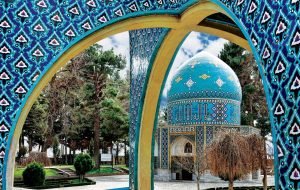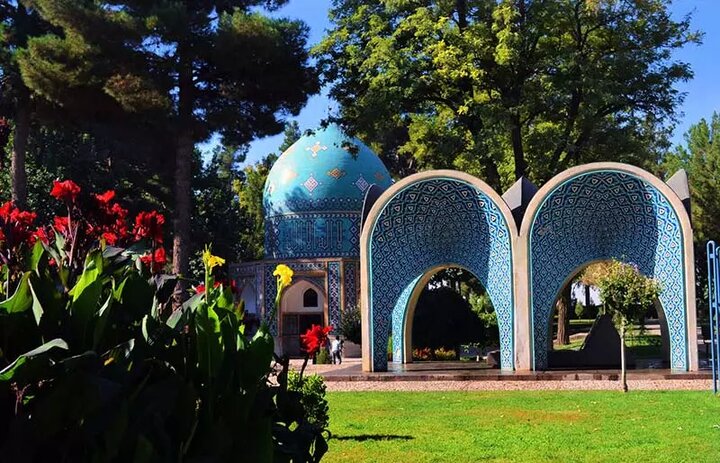Kamal-ol-Molk mausoleum: a masterpiece of Persian art and architecture
TEHRAN – Nestled in the serene garden in the ancient city of Neyshabur, the Kamal-ol-Molk mausoleum stands as a tribute to one of Iran’s most celebrated contemporary artists, Mohammad Ghaffari, known as Kamal-ol-Molk (1224–1319). The revered painter, often considered the father of modern Iranian painting, rests beside the tomb of Abu Hamid bin Abu Bakr

TEHRAN – Nestled in the serene garden in the ancient city of Neyshabur, the Kamal-ol-Molk mausoleum stands as a tribute to one of Iran’s most celebrated contemporary artists, Mohammad Ghaffari, known as Kamal-ol-Molk (1224–1319).
The revered painter, often considered the father of modern Iranian painting, rests beside the tomb of Abu Hamid bin Abu Bakr Ibrahim (c. 1145 – c. 1221), better known by his pen-names Farid ud-Din and Attar of Nishapur, the famed poet and mystic, creating a site rich in cultural and historical significance.
Designed by renowned the late Iranian architect Houshang Seyhun, the mausoleum blends traditional and modern architectural elements. Geometry plays a central role in the design, reflecting its deep connection to Iran’s architectural heritage. The structure is based on two squares, one half the size of the other, with semi-circular arches adorning all sides.
The interplay of intersecting arcs and arches creates intricate geometric patterns. These culminate in cone-shaped decorations, adorned with exquisite mosaic tiles in cobalt blue, white, and other vibrant hues. The decorations, carefully applied to the curved surfaces, grow smaller as they converge toward the symmetry line, adding to the mausoleum’s visual harmony.
The materials used—concrete, stone, and tile—were carefully selected to complement the adjacent Attar Mausoleum. The gravestone of Kamal-ol-Molk is a single piece of polished granite, featuring a relief of the artist sculpted by his pupils, a testament to his enduring influence on Iranian art.
The mausoleum is not only an architectural marvel but also a destination for art and history enthusiasts. Its harmonious design, vibrant decorative elements, and cultural significance make it a must-visit site for anyone exploring the rich heritage of Neyshabur in northeast Iran.

Kamal-ol-Molk created some of his most significant works during the years he stayed at Nasereddin Shah Qajar’s court. The paintings he created in this period, which lasted up until the assassination of Nasereddin Shah, were dominantly portraits of important people, landscapes, paintings of royal camps and hunting grounds, and various parts of royal palaces.
Dazzling city of the ancient world
A history buff’s paradise, Neyshabur (also called “Nishapur”) was a prosperous city in ancient times.
Situated about 70 km west of Mashhad, the capital of Khorasan Razavi province, Neyshabur was founded around the 3rd century CE. Narratives say that the city derived its name from its alleged founder, the Sasanian king Shapur I.
It rose to prominence in the 8th century and was destroyed by invasions and earthquakes in the 13th century. Subsequently, a much smaller settlement was established just north of the old city, and the once vibrant metropolis remained underground until a team of Metropolitan Museum excavators arrived in the mid-20th century.
The city and its surroundings were excavated in 1935 by experts from the Middle Eastern art department of the Metropolitan Museum of Art. At its height between the 9th and 13th centuries, Neyshabur had a population of around 100,000 to 200,000 people and a development covering an area of around six square miles.
AM
